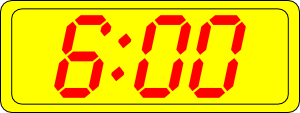Glacier begin to from when more snow falls during the winter than melts and evaporates in summer. The excess snow gradually builds up in layer. its increasing weight causes the snow crystals under the surface to
After a rainfall, water fills the stream channels called wadi 1. The rapidly flowing water cuts away the rocks of desert mountains and carries sediments created fan-shaped known as alluvial fans 2. Sometimes, the streams carry water into low areas in the desert plains and form into temporary lakes. The water that collects in these lakes either evaporates or seeps into the ground. Water erosion also creates big flat-topped hills known as mesas 3. and smaller flat-topped hills called buttes 4.
Erosion is the natural process by which rock are broken loose from the Earth,s surface at one location and moved to another. Erosion changes land by wearing down mountains, filling in valleys, and making rivers
The continental margins forms the part of the seabed that borders the continents. It consist of (1) the continental sheft, (2) the continental slope, and (3) the continental rise. The continental shelf is submerged
The bottom of the ocean has feature has varied as those on land. Huge plains spread out across the ocean floor, and long mountain chains rise toward the surface. Volcanoes erupt from ocean bottom, and deep
Plate tectonics is a theory that explains the origin of most of the major features of the Earth's surface. For example, the theory tells us why most volcanoes occur where they do, why there are high ridges and deep trenches in the oceans, and how mountains form. According to this theory, the Earth has an outer shell made up of about 30 rigid pieces called tectonic plates. Some of these plates are gigantic. For instance, most of Pacific Ocean covers a single plate. The plates move about on a layer of rock that is so hot it flows, even though it remains solid. They move at speeds up to about 4 inches (10 cm) per year.
WHAT DID THE CONTINENTS USED TO LOOK LIKE?
When the Earth formed, the lighter elements floated to the surface where they cooled to form a crust. Although the first rock were formed over 3,500 years ago they have not stayed the same. They have been changed from forces on the inside and the outside of the Earth. The coastlines on each side of the Atlantic appear to have a jigsaw fit. It is thought that all the land masses were once joined together forming a super continent called PANGAEA. This split up to form the continents we know today.
WHAT ARE OCEAN TRENCHES?
Trenches are the deepest parts of the ocean. Many renches occur in the Pacific Ocean, especialy its in wesstern portion. Most trenches are long, narrow, and deep, 2 to 2.5 miles (3 to 4 km) below the the surrounding sea floor. The greaest depth anywhere in the ocean is found in the Mariana Trench southeast of Japan. It pluges more than 6.8 miles (11km) below sea level. Frequent earthquakes and volcanic eruptions occur along the trenches.
WHAT DEFINES A DAY?
For early peoples, the only changes that were truly regular, were the motion of the objects in the sky. The obvious of these changes was the alternate daylight and darkness, caused by the rising and setting of the sun. Each of these cycles of the sun came to be called a day. Another regular change in the sky was the change in the visible shape of the moon . Each cycle of the moon's changing shape takes about 291/2 days, or a month. The cycle of the seasons gave people and even longer unit of time. There is no longer change in the sky that lasts seven days, to represent the week. The seven-day week jewish custom of observing a sabbath (day of rest) every seventh day. The division of a day into 24 hours , an hour into 60 minutes, and a minute into 60 seconds probably came from ancient babylonians.

FACT FILE
Some clock faces are divided into 24 hours. On such a clock, 9 a.m.
would be shown as 0900 and 4 pm would be 1600. this system avoids
confusion between the morning and evening hours.

WHAT IS THE DEPTH OF THE PACIFIC OCEAN?
The pacific ocean, the largest and deepest of the world's four oceans, covers more than a third of the earth's surface and contains more than half of its free water. The floor of the pacific ocean, Which has an average depth of around 14,000 feet (4,300), is largrly a deep-sea plain. The name Pacific, which means peaceful, was given o it by portueguese navigator Ferdinand Magellan in 1520. The pacific is the oldest of the existing ocean basins, its oldest rocks having been dated at 200 million years. The Pacific Ocean is bounded on the east by the north and south American continents; on the north by the Bering strait; on the west by Asia, the Malay Archipelago, and Australia; and on the south by Antartica.





















